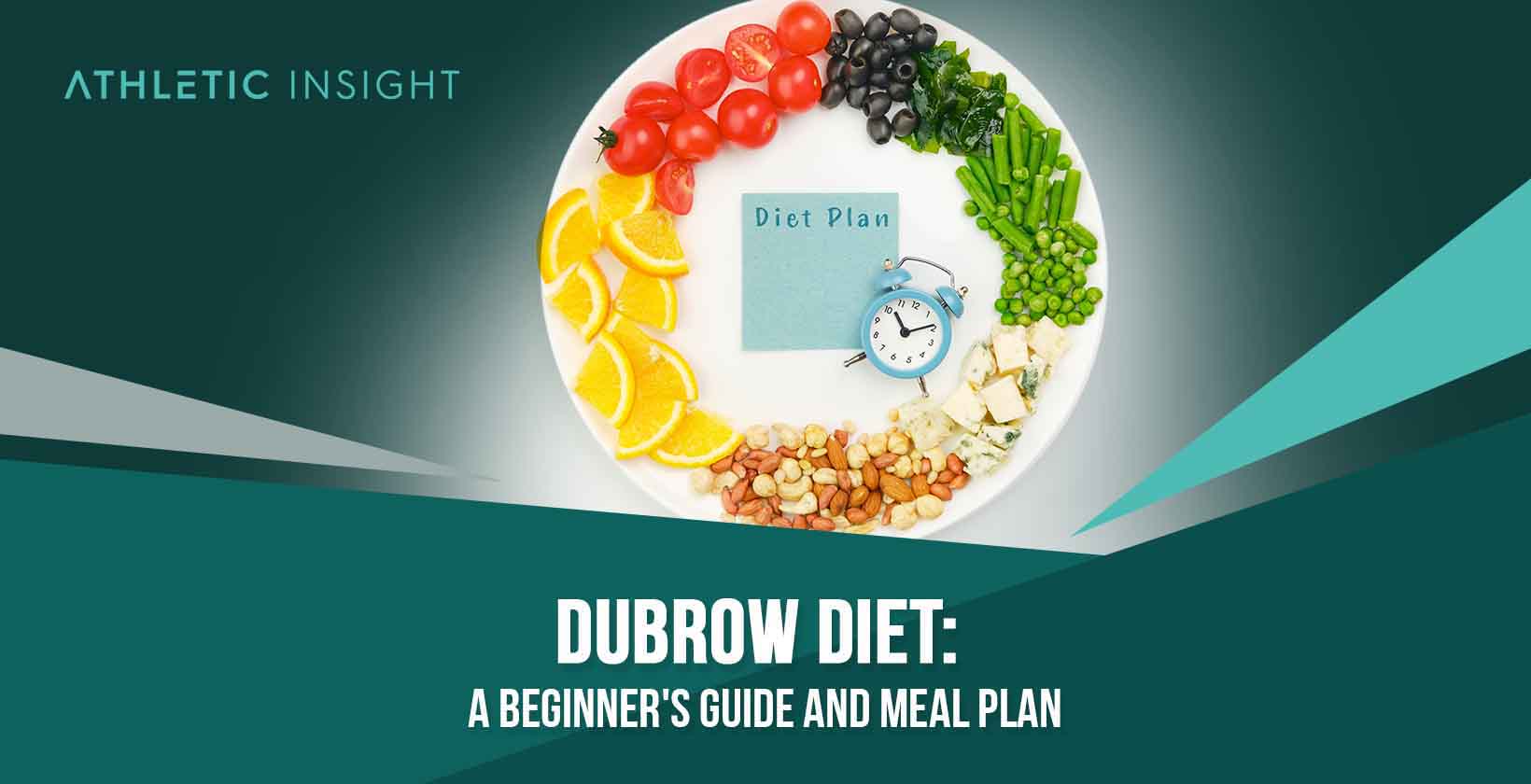The Dubrow Diet is a low-carb, high-fat, and moderate-protein diet plan created by reality TV stars and wellness experts Heather and Terry Dubrow. It combines low-carb and ketogenic diets to promote weight loss, improved energy levels, and a healthier lifestyle.
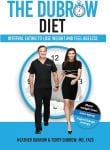
Improved Digestion
Increased Energy
Weight and Fat Loss
The Dubrow Diet recommends cutting back on processed foods, sweets, and carbs while increasing lean protein, healthy fats, and non-starchy vegetables. The diet can be important for those seeking a healthier lifestyle with lower-carb options.
The benefits of the Dubrow Diet include weight loss, improved insulin sensitivity, increased energy levels, better mental clarity, and improved digestion. By focusing on nutrient-dense, whole foods and limiting processed and sugary foods, the Dubrow Diet can help improve overall health and wellness.
The Terry Dubrow Plan is a hybrid of the ketogenic and intermittent fasting diets. On a ketogenic diet, you cut off all forms of carbohydrate intake. Dieters who practice intermittent fasting go without eating for extended periods. The Dubrow diet combines these two eating plans to create healthy, low-carb options.
What Is a Dubrow Diet?
The Dubrow Keto Fusion Diet promotes weight loss, improved energy levels, and overall health and wellness by limiting what someone eats, when they eat, and how much. There are two main parts of the Dubrow Diet; the 16:8 Intermittent Fating and the Full-day Fast.
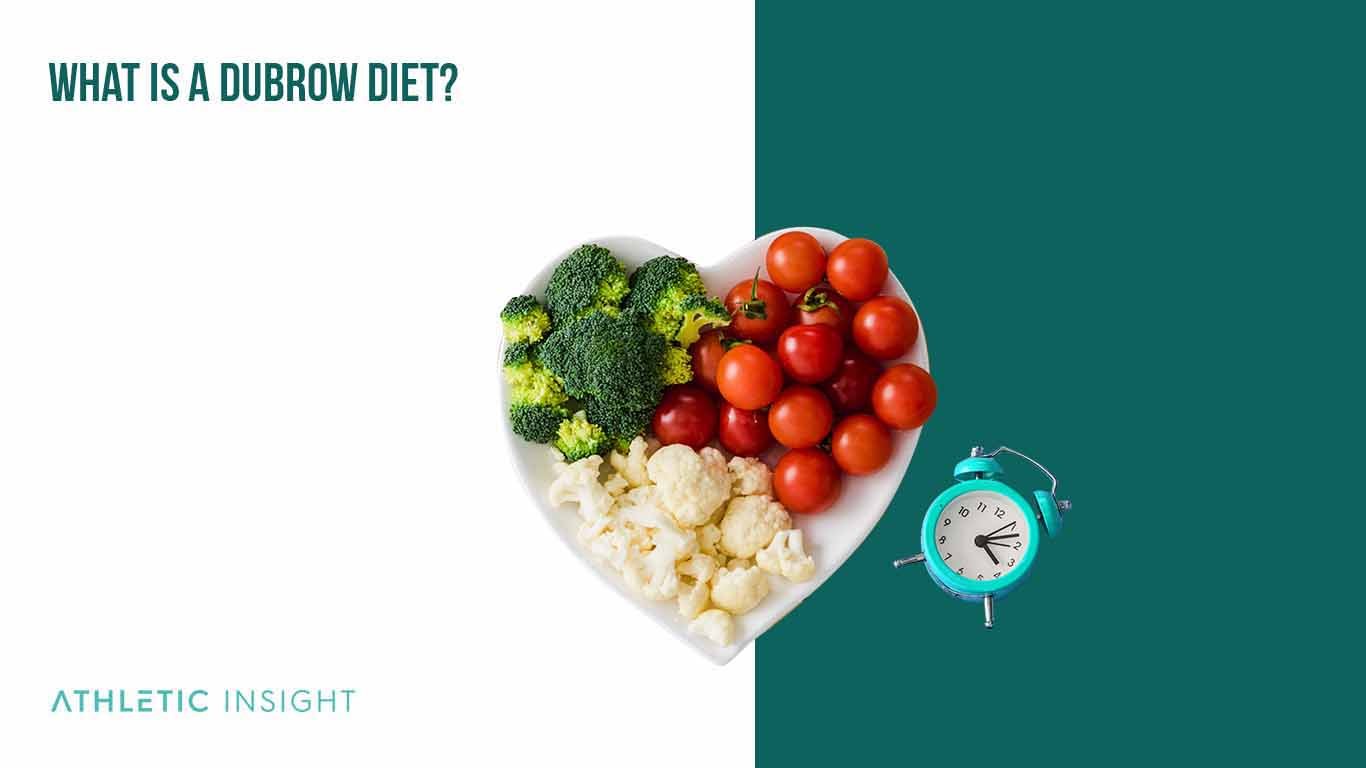
- 16:8 Intermittent Fasting: Dieters eat only during an 8-hour window each day, followed by a 16-hour fast.
- Full-Day Fast: Dieters delay eating for 24 hours, then resume regular eating habits.
The Dubrow Diet follows the idea that modern diets high in processed foods and sugar contribute to many health issues and that a diet focused on nutrient-dense, whole foods can help improve overall wellness. This diet plan triggers the body’s metabolic shift into a state of ketosis, which burns fat for energy instead of glucose.
What Is the History of a Dubrow Diet?
Heather and Terry Dubrow are the creators of the Dubrow diet. As a husband and wife team who are reality TV stars and wellness experts, the couple wanted to find a more sustainable diet than keto. They first introduced the diet in 2018 with the publication of their book, “The Dubrow Diet: Interval Eating to Lose Weight and Feel Ageless.”
The couple developed the Dubrow Diet due to their personal experiences with diet, wellness, and plastic surgery. Heather and Terry noticed that many patients who underwent weight loss surgery struggled with maintaining their weight loss. They saw the need for a more sustainable and health-promoting approach to diet and lifestyle.
The Dubrow Diet quickly gained popularity due to its emphasis on whole, nutrient-dense foods and its use of intermittent fasting to support weight loss. The diet has been widely adopted by people looking to improve their overall health and has received positive reviews from many diet and wellness experts.
How Does the Dubrow Diet Work?
The Dubrow Diet triggers the body’s metabolic shift into a state of ketosis, which burns fat for energy instead of glucose. Here’s a step-by-step explanation of how the Dubrow Diet works in the body.
- Limiting Carbohydrates: Reducing carbohydrates burns fat stores for energy instead of glucose.
- Increasing Fat Intake: Healthy fats provide energy and support the body’s metabolic shift into ketosis.
- Consuming Moderate Protein: High-quality protein supports muscle mass and maintains a healthy metabolism.
- Intermittent Fasting: Time-restricted eating reduces insulin levels and improves overall metabolic function.
When the body enters a state of ketosis, the diet targets the liver and other organs, including the brain, muscles, and heart, for increased energy production.
The body’s initial reaction to the Dubrow Diet may include increased energy, improved mental clarity, and reduced cravings for sugar and processed foods. It may take two to three weeks to see significant results, such as weight loss and higher energy levels.
What are the Phases in the Dubrow Diet?
The Dubrow Diet consists of three phases, each focusing on weight loss and maintenance to sustainability. These three phases are the “Red Carpet Ready” phase, the “Summer is Coming” phase, and the “Look Hot While Living Like a Human” phase.
- Phase 1 – “Red Carpet Ready”: The first phase can help jumpstart weight loss and set the foundation for the following stages. During this phase, dieters should follow a strict low-carb, high-fat, and moderate-protein diet and incorporate intermittent fasting into their routine. This phase typically lasts 2-4 weeks and emphasizes the consumption of nutrient-dense, whole foods, such as non-starchy vegetables, healthy fats, and high-quality protein sources.
- Phase 2 – “Summer Is Coming”: The second phase of the Dubrow Diet focuses on stabilization and maintaining weight loss. During this phase, dieters complete a slightly less restrictive version of the diet, allowing for a limited number of low-carbohydrate foods, such as berries and starchy vegetables. This phase also continues to emphasize the importance of intermittent fasting and the consumption of nutrient-dense, whole foods.
- Phase 3 – “Look Hot While Living Like a Human”: The final phase of the Dubrow Diet is for a sustainable, long-term approach to diet and wellness. During this phase, dieters should balance their dietary habits and lifestyle while prioritizing whole, nutrient-dense foods and intermittent fasting principles. The focus of this phase is to maintain weight loss and overall health and wellness while allowing for some flexibility in food choices.
What Are The Health Benefits of The Dubrow Diet?
The Dubrow Diet has several potential health benefits, including weight loss, improved insulin sensitivity, increased energy levels, improved digestion, and decreased inflammation.
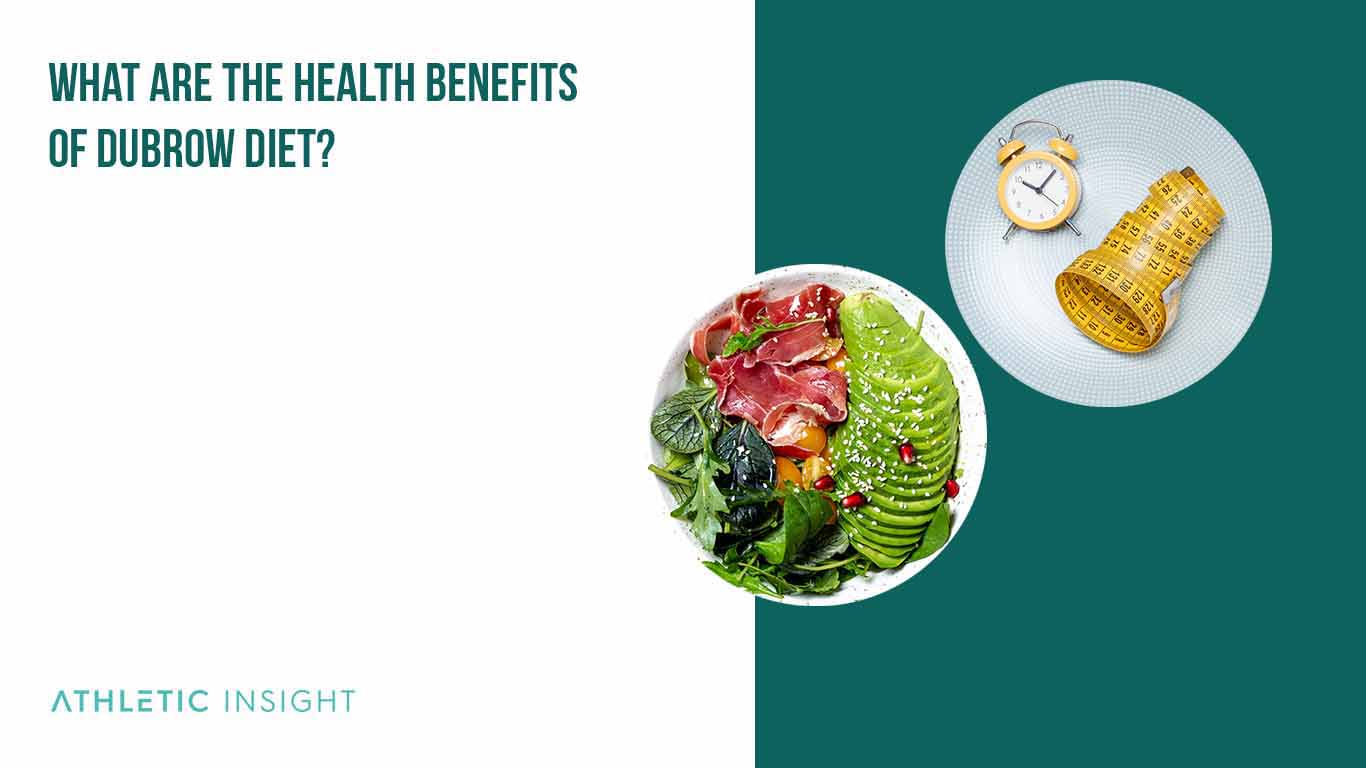
- Weight Loss: Improve body composition by restricting carbohydrates.
- Improved Insulin Sensitivity: Low-carb, high-fat foods may improve insulin sensitivity and blood sugar control.
- Increased Energy Levels: Fats and protein provide sustained energy.
- Improved Digestion: Emphasizing fiber-rich foods helps improve digestion and support gut health.
- Decreased Inflammation: Nutrient-dense whole foods may help reduce inflammation.
What Are The Health Risks of The Dubrow Diet?
While the Dubrow Diet may offer potential health benefits, it’s also essential to consider the potential health risks associated with this diet, including nutrient deficiencies, dehydration, increased cholesterol levels, constipation, and difficulty sticking to the diet.
- Nutrient Deficiencies: Restricting certain food groups may cause nutrient deficiencies, mainly if the diet is not balanced and adequately planned.
- Dehydration: Limiting food intake may lead to dehydration, primarily if adequate water and electrolyte intake are not maintained.
- Increased Cholesterol Levels: High-fat approach may lead to increased cholesterol levels, particularly if you consume unhealthy or processed fat sources.
- Constipation: Restricting carbohydrates may cause constipation, especially if fiber intake is not adequately addressed.
- Difficulty Sticking to the Diet: Strict nature may be challenging for some to maintain, leading to difficulty sticking to the diet and potential weight regain.
How To Do the Dubrow Diet?
Before starting the Dubrow Diet, it’s essential to talk with a healthcare professional to ensure that it’s safe and appropriate for your health needs and goals.
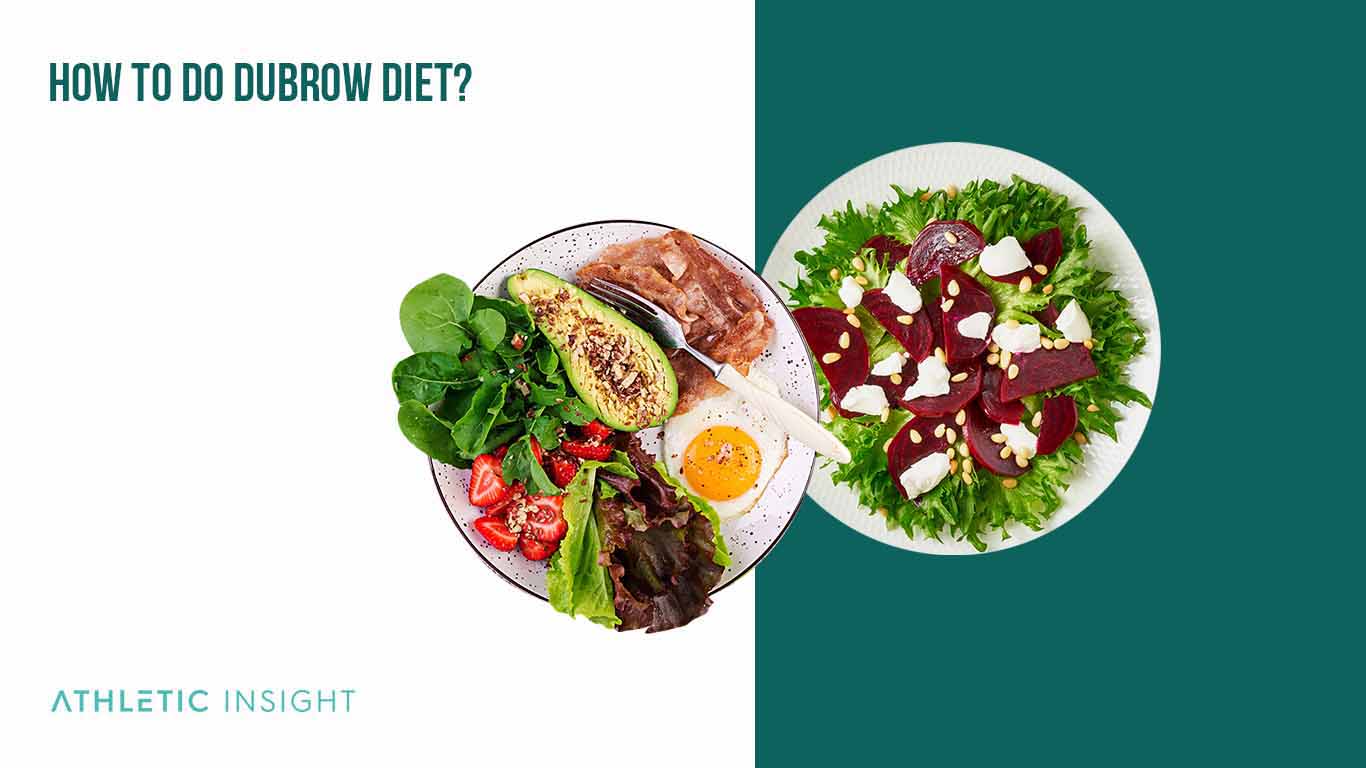
Here’s a step-by-step guide on how to do the Dubrow Diet:
- Familiarize yourself with the phases of the diet: The Dubrow Diet is in three phases, each with its guidelines for what to eat and when. Familiarize yourself with the guidelines for each step, and plan how you will transition from one phase to the next.
- Make a grocery list and meal plan: Make a list of the foods you will need to follow the Dubrow Diet, and plan your meals to help you stay on track.
- Eat healthy fats and proteins: The Dubrow Diet emphasizes healthy fats and proteins, such as olive oil, avocado, nuts, seeds, and grass-fed meats. Incorporate these foods into your meals, and avoid processed and unhealthy fats.
- Limit carbohydrates: The Dubrow Diet restricts carbohydrates, particularly refined and processed carbohydrates. Choose whole food sources of carbohydrates, such as vegetables and fruit, and limit your intake of processed and refined carbohydrates.
- Incorporate fiber-rich foods: The Dubrow Diet emphasizes fiber-rich foods, such as leafy greens and other vegetables, to support digestion and overall health.
- Stay hydrated: The low-carb approach of the Dubrow Diet may lead to dehydration, so it’s essential to drink plenty of water and electrolyte-rich beverages.
- Monitor your progress: Keep track of your weight loss and how you feel physically and mentally, and adjust your approach as needed to ensure that you achieve your goals.
There isn’t a specific limit for the number of calories you should consume on the Dubrow diet. However, if you are focusing on nutrient-dense whole foods that are low in carbs, you will probably be consuming around 1500 calories per day.
The proposed time frame for the Dubrow Diet is not specified, but it’s recommended to progress through the phases at a pace that is comfortable and sustainable for you.
The best practices to follow when doing the Dubrow Diet include:
- Planning your meals
- Staying hydrated
- Monitoring your progress
- Adjusting your approach as needed
What Are The Foods That You Can Eat While On A Dubrow Diet?
The Dubrow diet food list includes items you can eat while on the Dubrow Diet vary, depending on the phase of the diet.
- Proteins: Grass-fed meats, poultry, fish, eggs, and dairy products (in limited amounts)
- Healthy Fats: Olive oil, avocado, nuts, seeds, and fatty fish
- Vegetables: Leafy greens, cruciferous vegetables, root vegetables, and other low-carb vegetables
- Fruits: Berries, apples, and other low-carb fruit
- Whole Grains: Quinoa, brown rice, and other whole grains (in limited amounts)
- Legumes: Lentils, chickpeas, and other legumes (in limited quantities)
- Nuts and Seeds: Almonds, chia seeds, and other nuts and seeds
- Dairy Products: Greek yogurt, cheese, and other dairy products (in limited amounts)
- Beverages: Water, herbal tea, and unsweetened coffee and tea

Improved Digestion
Increased Energy
Weight and Fat Loss
What Are The Foods That You Should Avoid While On a Dubrow Diet?
While on the Dubrow Diet, it’s recommended to avoid the following foods.
- Processed Foods: Chips, crackers, candy, and other processed snacks
- Refined Sugar: Table sugar, high-fructose corn syrup, and other added sugars
- Artificial Sweeteners: Aspartame, saccharin, and other artificial sweeteners
- White Flour: White bread, pasta, and other white flour products
- Trans Fats: Margarine, shortening, and other products containing partially hydrogenated oils
- High-Carbohydrate Foods: Pasta, rice, potatoes, and other high-carb foods
- Alcohol: Beer, wine, and other alcoholic beverages
- Fried Foods: French fries, fried chicken, and other fried foods
- Processed Meats: Hot dogs, sausage, and other processed meats high in sodium and preservatives
Who Should Do The Dubrow Diet?
Dubrow Diet is not suitable for everyone. People who are pregnant, breastfeeding, under the age of 18, or have a history of eating disorders should not do this diet.
The diet may benefit people who want to lose weight, improve their overall health, or have digestive issues, such as swallowing disorders or difficulty tolerating normally textured or highly-seasoned foods. People with these issues may find that the low-carb, high-protein approach of the Dubrow Diet helps them feel better and improves their symptoms.
However, it’s important to note that the Dubrow Diet should not be the sole treatment for any medical condition and should always be in conjunction with other treatments recommended by a doctor.
Before starting the diet, it’s essential to consult a healthcare professional to determine if it’s appropriate for you and to develop a safe and effective meal plan.
What Are the Best Recipes for Dubrow Diet?
Recipes for the Dubrow diet are low in carbs and high in protein, and use healthy fats, such as olive oil or avocado, to help keep you on track and achieve your weight loss and health goals. Here are five example recipes for the Dubrow Diet.
- Grilled Chicken with Broccoli and Almonds: This dish features grilled chicken breast served with steamed broccoli and a sprinkle of almond slices for added crunch and healthy fat.
- Baked Salmon with Asparagus: Fresh salmon filets baked in the oven and served with roasted asparagus for a low-carb, high-protein meal.
- Turkey and Vegetable Stir-Fry: Thinly sliced turkey breast is stir-fried with a mix of colorful vegetables and seasoned with a low-carb sauce for a flavorful, satisfying meal.
- Egg and Vegetable Breakfast Bowl: This breakfast bowl features scrambled eggs mixed with diced vegetables, such as bell peppers, onions, and mushrooms, for a high-protein start to the day.
- Beef and Vegetable Skewers: Cubes of lean beef with bell peppers, onions, and mushrooms, and grilled to perfection for a tasty, low-carb meal.
What Is a Sample Dubrow Diet Plan?
Here is a weekly Dubrow Diet plan that anyone can follow.
- Day 1
- Breakfast: Scrambled eggs with diced vegetables (e.g., bell peppers, onions, and mushrooms) and a side of mixed berries
- Lunch: Grilled chicken breast with steamed broccoli and a sprinkle of almond slices
- Dinner: Baked salmon with roasted asparagus and a mixed greens salad with olive oil and lemon dressing
- Day 2
- Breakfast: Turkey and vegetable stir-fry with a side of mixed berries
- Lunch: Grilled shrimp with a mixed greens salad with avocado and lime dressing
- Dinner: Beef and vegetable skewers with steamed green beans
- Day 3
- Breakfast: Egg and vegetable breakfast bowl with a side of mixed berries
- Lunch: Grilled chicken salad with mixed greens, cherry tomatoes, cucumber slices, and a low-carb dressing
- Dinner: Baked cod with steamed asparagus and a mixed greens salad with olive oil and lemon dressing
- Day 4
- Breakfast: Greek yogurt with mixed berries and a sprinkle of almonds
- Lunch: Turkey and cheese roll-ups with a side of cherry tomatoes and cucumber slices
- Dinner: Grilled pork chops with roasted vegetables (e.g., bell peppers, onions, and zucchini)
- Day 5
- Breakfast: Veggie and cheese omelet with a side of mixed berries
- Lunch: Grilled shrimp and vegetable skewers with a mixed greens salad with avocado and lime dressing
- Dinner: Baked chicken with roasted vegetables (e.g., bell peppers, onions, and mushrooms)
- Day 6
- Breakfast: Greek yogurt with mixed berries and a sprinkle of almonds
- Lunch: Grilled salmon with steamed green beans and a mixed greens salad with olive oil and lemon dressing
- Dinner: Turkey and vegetable stir-fry with a side of mixed berries
- Day 7
- Breakfast: Veggie and cheese omelet with mixed berries
- Lunch: Grilled chicken salad with mixed greens, cherry tomatoes, cucumber slices, and a low-carb dressing
- Dinner: Baked beef and vegetable skewers with steamed asparagus
What Are The Facts About Dubrow Diet?
Here are some facts about the Dubrow Diet.
- Choose Healthy Options: This diet encourages the consumption of nutrient-dense, whole foods
- Focus on Protein: Consuming protein-rich foods maintains a healthy metabolism
- Eat Slowly and Chew Thoroughly: You can better tell your body’s needs if you slow down and thoroughly process your food, leading to less hunger in the long run
- Limit Processed Foods: Avoid processed foods high in unhealthy fats, added sugars, and artificial ingredients
Heather Dubrow’s diet plan emphasizes whole, unprocessed foods and limiting foods high in unhealthy fats. The Dubrow Diet is naturally low in both saturated fat and cholesterol, which can help to reduce the risk of heart disease and other health problems.
How Long Should You Do a Dubrow Diet?
The length of the Dubrow Diet varies based on individual goals and circumstances. You should consult a healthcare professional or dietitian to determine the best plan for you. However, most people make this diet a lifestyle change, continuing the diet for years.
How Long Does It Take for a Dubrow Diet to Show Results?
The length of time it takes to show Dubrow Diet results varies from person to person. However, some people have reported losing weight quickly within the first few weeks of following the Dubrow Diet. You should give it at least two to three weeks to start seeing results.
Does the Dubrow Diet Actually Work?
Limited research on the Dubrow Diet is available, and results may vary for individuals. Some Dubrow diet reviews report success in weight loss and improved overall health. Others may not see significant results.
Is Dubrow Diet Considered a Healthy Diet?
The Dubrow Diet is healthy for those without underlying health problems or eating disorders. Dubrow Diet reviews suggest that this diet is similar to intermittent fasting. It potentially has benefits for reducing inflammation and improving conditions associated with inflammation.
Should You Buy Dubrow Diet Book to Follow Dubrow Diet?
To follow this diet, you should buy a Dubrow Diet book. The book provides detailed information and guidance on the specifics of the diet. It can help you plan meals and ensure that you follow the diet correctly.
Where To Get or Buy a Dubrow Diet Book?
You can purchase the Dubrow Diet book online on Amazon or in bookstores. The availability of a Dubrow Diet pdf free download is uncertain, and downloading such files may not be legally or ethically sound. It is best to purchase the official book or seek out trustworthy sources of information.

Improved Digestion
Increased Energy
Weight and Fat Loss

